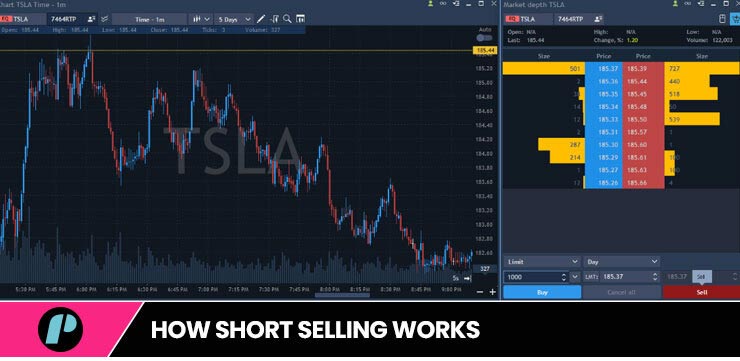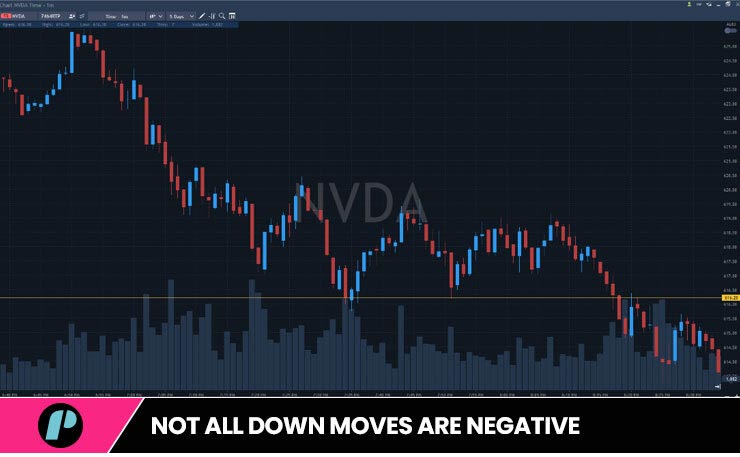
Introduction
Short selling is a fascinating and often misunderstood practice within the stock market that allows traders to make gains from market volatility during both uptrends and downtrends alike. Simply put, short selling consists of speculation that the price of a stock (or any other assets) will go down in the future and selling that stock rather than buying it.
But how do you sell something you don’t own in the first place?
Well, you are about to find out.
In this article, we’ll dive into the concept of short selling while explaining how it works and its importance for the stock market.
Ready?
Let’s do it!
What is Short Selling?
Short selling, (or “shorting”) is a trading strategy that allows investors to profit from the decline in a stock’s price, from an entire market downtrend, and even from a period of economic recession.
In traditional investing, the goal is to identify companies and stocks with a strong potential for growth, buy them, and wait for the price to go up; in other words, “buy low, sell high”. Short selling, however, managed to turn this simple concept on its head creating the opportunity to speculate and make profits on either direction of price movements.
To achieve this, short sellers have gone from buying low and selling high to “selling high and re-buying low”
Yes, I know, it may all sound a bit confusing at first but don’t worry, it really is rather simple.
Let’s try to explain it all a little more clearly
How does short selling work?
When traders predict a decline in a stock’s price and decide to take advantage of it by short-selling that stock, all they’ll have to do, in most cases, is click on the “sell” tab of their broker’s platform. Behind that single click, however, there is a slightly more complex process.
Behind the scenes, the broker lends the trader the chosen amount of shares and then sells them at the trader’s selected price (limit order) or immediately (market order).
Once the sale is made, traders will wait hoping to see price descending to the desired level and, if it does, they will be able to buy back the stock at a lower price than they previously sold it for.
When the short trade is closed – either manually by the trader or by a SL/TP order, the stock is automatically re-bought and paid back to the broker, but, for traders, it is again just a matter of clicking a tab or two.
The difference between the price at which a short seller initially sold the stock and the price at which they bought it back represents the profit (or loss).
Key Notes
- Short selling allows traders to profit from declining stock prices..
- The automated process of short selling includes borrowing stocks from the broker, selling them, buying them back, and returning them to the broker.
- Short sellers aim to sell stock and buy it back cheaper at a later time.
- The difference between the revenue from the sale of stock and the price paid to buy it back makes the short seller’s profit or loss.
Importance of Short Selling
The benefits that the possibility of shorting stock creates are not limited to traders and traders’ profit; short sellers play a crucial role in the stock market for several reasons.
For example:
- It helps to provide a more accurate reflection of a stock’s true value.
Short sellers tend to target over-valued companies, leading to a more balanced and accurate market representation. - It allows investors to hedge their long positions.
By shorting stocks, investors can protect their portfolios from potential market downturns. - It increases liquidity in the market.
Short selling provides an additional source of securities available for trade, thereby increasing market efficiency. - Short sellers often identify market bubbles before they burst.
By taking short positions in these stocks, they can help to prevent unsustainable market growth and contribute to a more stable market environment. - Short sellers’ research often helps to bring to light fraudulent companies and behaviors in the market.
This has happened several times in the past with examples such as Enron, Valeant Pharmaceuticals, Wirecard, and Lumber Liquidators, all being discovered and “taken down” by short sellers.
Key Notes
- Short selling benefits the market in many ways including increasing liquidity and effective edging.
- Shorting is often misunderstood and this makes it one of the most controversial financial practices.
- Short selling could potentially be used for market manipulation and, for this reason, is very tightly regulated.
Challenges and Controversies
While, as we just said, short selling can be immensely beneficial for market efficiency, it does come with a good dose of controversy.
Critics argue that short selling contributes to excessive market volatility and, in some cases, may even be used to manipulate the market.
In addition to the fact that there are some ethical concerns about profiting from a company’s bad days (or even total decline), there are other more important concerns regarding the spreading of exaggeratedely negative news and information on certain companies by short sellers trying to ensure or speed up their decline.
Regulatory bodies closely monitor short selling and short sellers to prevent abusive practices and market manipulation.
In some cases, short selling restrictions may be put in place by the authorities to stabilize markets during times of extreme volatility.
All in all, criticisms apart, short selling is a beneficial and essential component of the stock market ecosystem. Short selling has the potential to contribute to both market efficiency and trader’s profit.
Understanding short selling can provide investors with valuable insights into market dynamics and risk management strategies and with twice the chances of gaining from price volatility.
But, as a trader, all you need to know is that by mastering a short selling strategy, you’ll be able to make money when price goes up as well as when it goes down. It’s a double bubble for you!
Hope this helps and wish you all happy trading!
If you liked this post make sure to share it!









